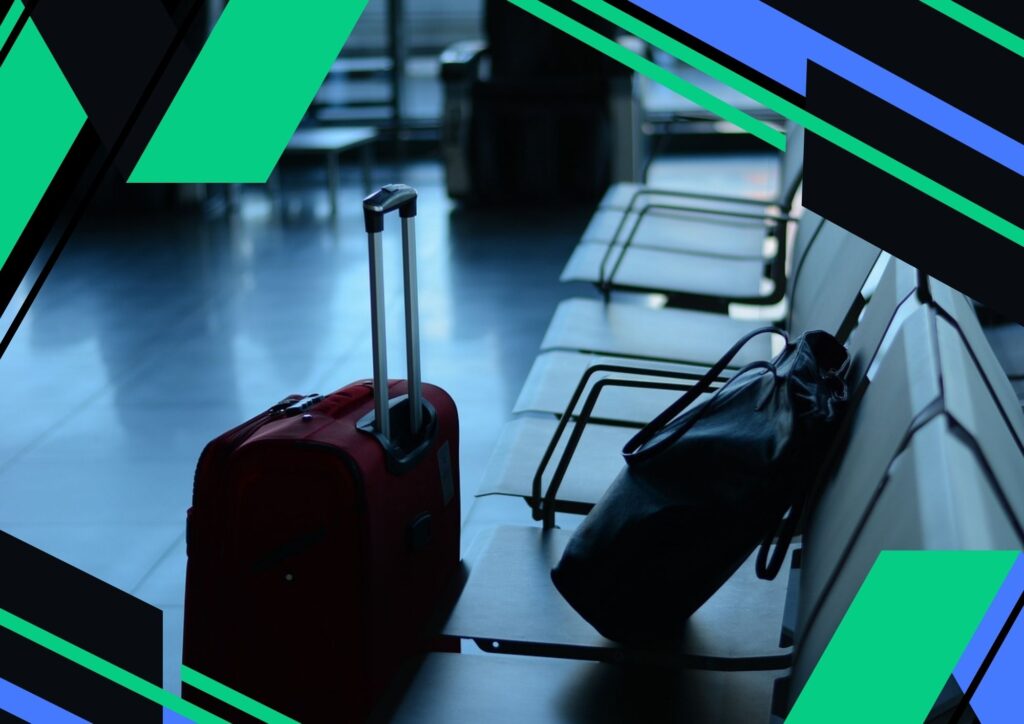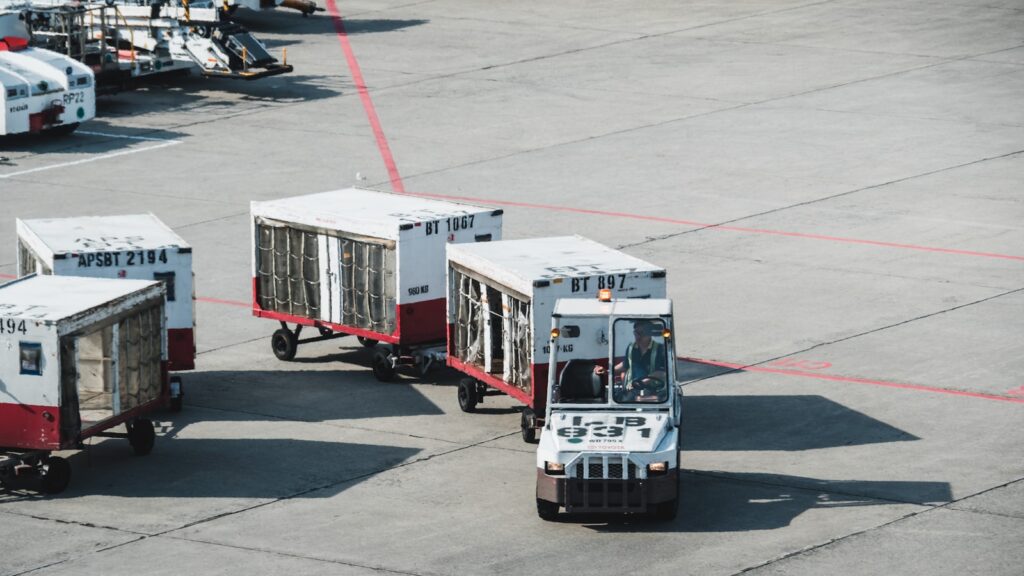Discovering that your luggage is delayed or, even worse, lost, can transform the excitement of travel into a moment of disappointment and frustration. That sinking feeling when you’re the last person at the baggage carousel, and your bag is nowhere to be seen, is a scenario no traveler wants to face. Yet, it’s a reality for many, leading to unexpected disruptions and often significant inconvenience.
If you find yourself in this predicament, know that there are effective steps you can take to both recover your belongings and secure compensation for delayed or lost baggage. From understanding what to do if your luggage is lost to navigating the process, the journey, while daunting, is manageable. Knowing how often airlines lose luggage can also help you prepare better for your journey and take preventative measures, such as using tracking devices or ensuring your baggage is properly labeled. Whether it’s handling delayed baggage issues or simply knowing what happens if an airline loses your luggage, the right knowledge and actions can significantly reduce the stress and impact of such incidents. Let’s dive into what you can do to turn this unfortunate event around.
What To Do When Your Luggage Is Lost or Delayed?

Dealing with delayed or lost baggage can be stressful, but knowing what to do next can help ease the process. Here’s what you should do about it.
Track Your Luggage Online
A lot of airlines have adopted automated baggage tracking systems, which have not only transformed the way we locate lost luggage, but also substantially reduced the odds of a suitcase straying in the first place. If you’re standing at the baggage claim booth, anxiously waiting with your carry-on bag but without your main bag there, just know that you have tools at your disposal.
With the original bag tag or tracking number from your report of your lost bag, you can go on the offensive and check the status of your luggage. Go to the airline website and check under ’baggage tracking’. This self-service option keeps you informed and provides the latest updates on your bag’s location, offering peace of mind.
After confirming your bags are actually lost, it’s important to take the next steps quickly. Knowing how to find lost luggage and acting swiftly can make all the difference in reuniting with your belongings.
TIP: Use the baggage tag provided at check-in to access the airline’s tracking system. This unique tag number is your key to real-time updates.
Contact the Airline
As soon as you realize your luggage is missing, the first step is to head directly to the airline’s baggage claim office. If you have flown directly with a single airline, it’s simple enough to find that airline’s baggage office to file your grievance. However, connecting international flights that operate on different carriers is a different ballgame.
If your travel plans involve connecting flights, the best practice is to work with the airline that operates the final leg of your journey. This carrier bears the ultimate responsibility to ensure your luggage arrives safely, even if the offence happened earlier in your journey.
Knowing what to do if an airline loses your bag is important, as filing your claim with the right airline speeds up getting your bag back and ensures that the issue of lost luggage is resolved quickly. Each step taken is a move closer to resolving the issue, potentially leading to lost luggage reimbursement, should your belongings not be recovered.
TIP: Keep all boarding passes and bag tags until your journey is complete to streamline this process.
File a Missing Baggage Report
The first thing you need to do once you have figured out that your luggage has been lost is to create a missing baggage report with the airline. When you go to fill out the report, be as detailed as you can about your checked bag and travel itinerary. Describe the size, colour and material of your luggage, and any unique identifying features it may have. Since most bags tend to look alike, attaching some sort of identifier, such as a brightly colored ribbon around the bag handle, can help your bag stand out from the rest.
Make sure the report accurately reflects your local address and contact details, and get the phone number for the Lost Baggage Desk, as well as a reference or tracking number for your claim. Our modern airline systems are set up to log and track these reports. But if you’re flying out of a smaller airport, which may not have as much technology at its disposal, you may receive a physical report in triplicate, often in yellow, to help keep you in the loop in terms of your records and follow up.
Request Delivery to Home or Hotel

Requesting delivery of your luggage to your home or hotel once it is located is a highly convenient option. When you file your report about the missing baggage, one thing you should do is provide the best contact information possible so that the airline can get in touch with you regarding your bag and deliver it when it is found. Offered by most airlines, this service saves you the trouble of visiting the airport again just to collect your baggage, which is a great relief for those in a hurry or on business trips.
Experts recommend declining if the airline asks you to collect your luggage from the airport, as it is their responsibility to deliver it to you. Once it’s established that your own bag didn’t make it with you, returning your luggage is up to the airline’s baggage logistics team. They should handle its return for you, expediently and at no additional cost. Not only does this save you time and possible hassle but it is also in line with the level of service your airline delivers should be expected to provide you in these cases.
Submit a Claim to the Airline
If your luggage is missing for more than 24 hours, many airlines have policies that give you the right to seek compensation. For example, Ryanair has a structured process for dealing with such situations, and you can refer to Ryanair’s delayed or lost baggage compensation guidelines to understand your rights and the compensation you might be entitled to. At that point, it’s important to fill out and submit the airline’s baggage claim form. This form is used to obtain specifics about what was in your lost luggage, including a list of each packed item with a rough dollar amount for each. This thorough detail is really helpful for the airline to properly inspect and process your compensation needs for lost and damaged items. The more accurate and complete your list is, the faster you will get through the claims process.
TIP: Photograph the contents of your luggage before traveling to make your claim process smoother in case of loss.
Keep Receipts of Incidental Expenses
Lost or delayed baggage usually results in unforeseen expenses. Acknowledging this, most airlines will reimburse passengers for reasonable expenses incurred as a result of their mismanagement. These may involve the price of replacing basic necessities like clothes, cosmetics, and other items. To verify that your expenditures will be deemed reasonable, it’s best to reach out to the airline and inquire about what the policy defines as a ‘smart buy.’
A replacement for lost items should be of similar goods that you would use during the course of your day-to-day life, as closely following spending habits as possible. Doing so not only increases the likelihood of your claim being approved, but also makes it more efficient for reimbursement. Most importantly, keep all receipts for such purchases as they will play a crucial role in proving your claim.
TIP: Focus on purchasing essentials (toothbrushes, undergarments, etc.) as these are more likely to be reimbursed without issue.
Check Your Credit Card Benefits
In the less-than-happy event your luggage is lost or delayed, the credit card you used to pay for your flight might cover you. Many credit cards also provide delayed or lost-bag coverage that can supplement any protection you receive through the airline or from travel insurance. These benefits typically come into play for expenses not already compensated for by the airline, offering an extra level of financial protection. To take advantage of these benefits, review the terms of your card agreement and contact your card provider for the steps to file a claim. Acting quickly can help you access the most support available to you in the face of these disruptions.
Check Your Luggage for Damage
When it comes time to get your luggage back, it’s critical to inspect it for damage. As a courtesy, airlines generally repair or replace damaged luggage. To do this, you’ll need to call the airline and report any damage within 24 hours of getting your bag back. This quick message is vital for your claim to be processed accurately and promptly.
Filling out a particular form that explains the damage is probably necessary for the repair or replacement process. You will also need to be in a position to present the original purchase receipt for any luggage and its contents. For example, if goods were purchased online, a printed receipt of the purchase is sufficient for claiming the goods. Whether you are dealing with an international flight or a domestic one, following these steps not only makes the process of resolution easier but also safeguards your rights as a passenger and makes sure you receive the compensation required for the damage caused to you.
FAQ
Yes, most jurisdictions recognize a passenger’s right to compensation for lost, delayed, or damaged checked luggage. This legal right means that airlines are accountable for the stuff you hand over to them as you travel. But it is important to remember that hand luggage claims are only applicable if the damage or loss was directly the fault of the airline. If looking to get lost baggage compensation, be sure to file a claim with the airline as soon as possible, supplying all necessary documentation and details of your case.
How your baggage is treated in the event that you miss your flight depends on a few specifics, including things like whether your luggage was checked and the procedures specific to the airline. If bags are checked, airlines typically will remove your luggage from the plane if you don’t get on board, generally. This is done for security and to properly manage luggage. After that, you must reach out to the airline’s baggage claim — and sometimes the airline’s customer service team — to get your luggage back and plan for your next steps, whether it’s rebooking or getting your bags. For the smoothest resolution, always communicate promptly with the airline.
